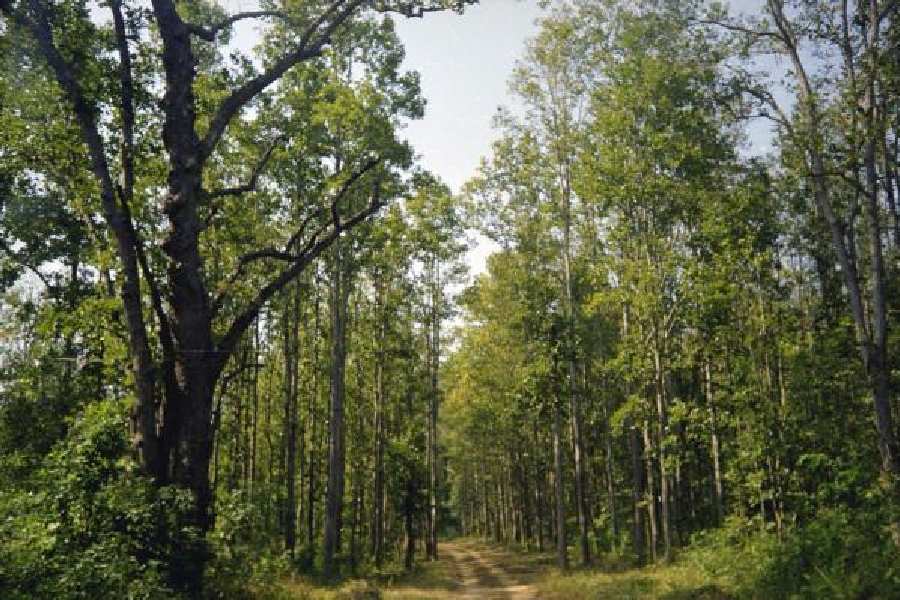A study by the Indian Institute of Technology Kharagpur has found that India’s forests are losing their ability to absorb carbon dioxide — the photosynthetic efficiency of Indian forests has declined by up to 12% in some dense forest areas over the past two decades. The primary reason for this is rising temperatures owing to climate change: heat stress and soil dryness reduce the ability of leaves to photosynthesise and use up carbon for it. This is worrying because the goal to reach net-zero emissions hinges on using forests as tools for carbon removal to reduce global emissions. The Indian government pledged to create a carbon sink capable of sequestering an additional 2.5-3 billion tonnes of carbon through forest and tree cover by 2030. India’s latest forest assessment showed that the country’s forest area had increased by 1,445 square kilometres between 2021 and 2023, with forest and tree cover accounting for about 25% of India’s land area. As per this, India has already created an additional carbon sink of 2.29 billion tonnes against the target of 2.5 to 3 billion by 2030. But the new findings raise questions about the amount of carbon that forests can soak up. At the present rate of forest degradation, India would have to create an additional carbon sink of 360 million tonnes; this number will only go up as the heat rises and the soil dries up.
But the maths is not that simple. The analysis also showed that only 16% of India’s forests are ‘high integrity’ or functioning as they should. This shatters the findings of consecutive India’s State of Forest Reports brought out by the Centre that show an expanding green cover and deepening carbon sink in India. The ISFR relies on satellite data that do not look beneath the canopy and include orchards, monoculture plantations and, at times, even agricultural land as forest cover. There is also the fine print of the ISFR which reveals that very dense forests — the denseness helps minimise evaporation due to heat and keeps the soil moist — have actually decreased by 63.88 sq km outside recorded forests. Following the latest amendments to the Forest (Conservation) Act, projects like mines, highways, and ‘strategic developments of national importance’ are in the works in areas like the Western Ghats and Andaman
and Nicobar that are home to some of India’s ‘high integrity’ forests. Unless India stops its reckless misuse of forests and callous deception with data, its carbon emissions will soon turn up the heat in the country.










